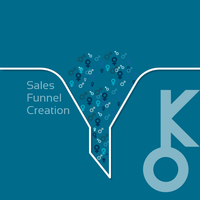Conversion Optimization: Landing Page Optimization

Conversion optimization is the practice of improving the percentage of website visitors who take a desired action, such as making a purchase or filling out a form. One crucial aspect of conversion optimization is landing page optimization.
A landing page is a web page that serves as the entry point for users who have clicked on an advertisement or other online marketing campaign. Its primary goal is to encourage visitors to take specific actions, thus converting them into leads or customers.
Importance of Landing Page Optimization
Landing page optimization plays a significant role in improving conversion rates and overall marketing effectiveness. A well-optimized landing page can drive more targeted traffic and convert that traffic into valuable leads or sales.
Elements of an Effective Landing Page:
- Compelling Headline: A strong headline grabs the attention of visitors and conveys the value proposition or offer clearly and concisely.
- Clear Call-to-Action (CTA): The CTA should be prominently displayed with persuasive copy, urging visitors to complete the desired action.
- Engaging Visuals: High-quality images or videos can help illustrate key points, engage users, and enhance overall user experience.
- Concise Copywriting: The content on the landing page should be clear, concise, and focused on addressing visitor pain points while highlighting benefits.
- Social Proof: Including testimonials, reviews, case studies, or trust badges can instill trust in potential customers by demonstrating others' positive experiences with your product or service.
- Clean Design & Layout: A clutter-free design with ample white space makes it easier for users to navigate through the content and locate essential information quickly.
- Mobile Responsiveness: With mobile usage on the rise, ensuring your landing pages are optimized for mobile devices is critical for reaching a broader audience.
- Form Optimization: If capturing lead information is essential to your goals, optimizing form design and length can increase conversions. Consider only asking for the necessary information to avoid overwhelming users.
- A/B Testing: Regularly testing different variations of landing pages to identify what elements contribute to higher conversion rates is crucial. This could involve testing different headlines, CTAs, colors, layout, or imagery.
- Tracking & Analytics: Implementing analytics tools enables you to collect data on user behavior and measure the effectiveness of your landing page optimization efforts.
Benefits of Landing Page Optimization:
- Increased Conversions: By focusing on improving various elements of your landing pages, such as headline copy or CTA placement, you can significantly boost conversion rates.
- Improved Return on Investment (ROI): Optimized landing pages help maximize ROI by converting a more significant percentage of visitors into leads or customers without increasing advertising spend.
- Enhanced User Experience: A well-designed and optimized landing page provides a seamless user experience by addressing visitor needs effectively and increasing overall satisfaction.
- Deeper Audience Insights: By monitoring and analyzing user behavior on different variations of your landing pages through A/B testing, you gain valuable insights into audience preferences and behaviors.
In conclusion, optimizing your landing pages is an essential component of conversion optimization strategy. By implementing effective techniques such as compelling headlines, clear CTAs, engaging visuals, concise copywriting, social proof integration, clean design patterns for responsiveness across devices,and conducting regular A/B tests along with tracking analytics consistently; you can improve conversions while enhancing the user experience and gaining valuable insights about your target audience's behaviors and preferences.
Sponsored
Sponsored
Sponsored
Explore More:

The Impact of AI and Machine Learning
As technology continues to advance at a rapid pace, businesses are constantly looking...

Future of Sales Funnels
The future of sales funnels is an exciting and promising concept for businesses...

Lessons Learned from Failed Funnels
In the realm of sales funnel creation, case studies serve as valuable resources...

Successful Sales Funnel Examples
In sales funnel creation, case studies play a crucial role in demonstrating the...

Case Studies in Sales Funnel Creation
In the world of sales and marketing, case studies play a crucial role...

Sales Funnel Recovery Strategies
Sales funnels are a critical component of any successful sales and marketing strategy....

Improving Funnel Efficiency
A sales funnel is a crucial component of any business's marketing strategy. It...

Identifying Funnel Leaks
A sales funnel is a systematic approach to guiding potential customers through a...

Sales Funnel Troubleshooting
Sales funnel troubleshooting is the process of identifying and resolving issues or bottlenecks...

Sales Funnel Tools and Software: Landing Page Builders
Sales funnels are essential in driving conversions and increasing revenue for businesses. To...

Sales Funnel Tools and Software: Email Marketing Tools
Sales funnel tools and software refer to the various technologies and platforms available...

Sales Funnel Tools and Software: CRM Software
Sales funnel tools are software programs or applications designed to help businesses track...

Sales Funnel Tools and Software
A sales funnel is a framework used by businesses to guide potential customers...

Measuring Sales Funnel Performance: Analytics and Reporting
Measuring sales funnel performance analytics and reporting is a crucial aspect of any...

Measuring Sales Funnel Performance: Sales Funnel Metrics
Measuring the performance of your sales funnel is crucial for understanding the effectiveness...

Measuring Sales Funnel Performance: Key Performance Indicators (KPIs)
Measuring the performance of a sales funnel is crucial for any business aiming...